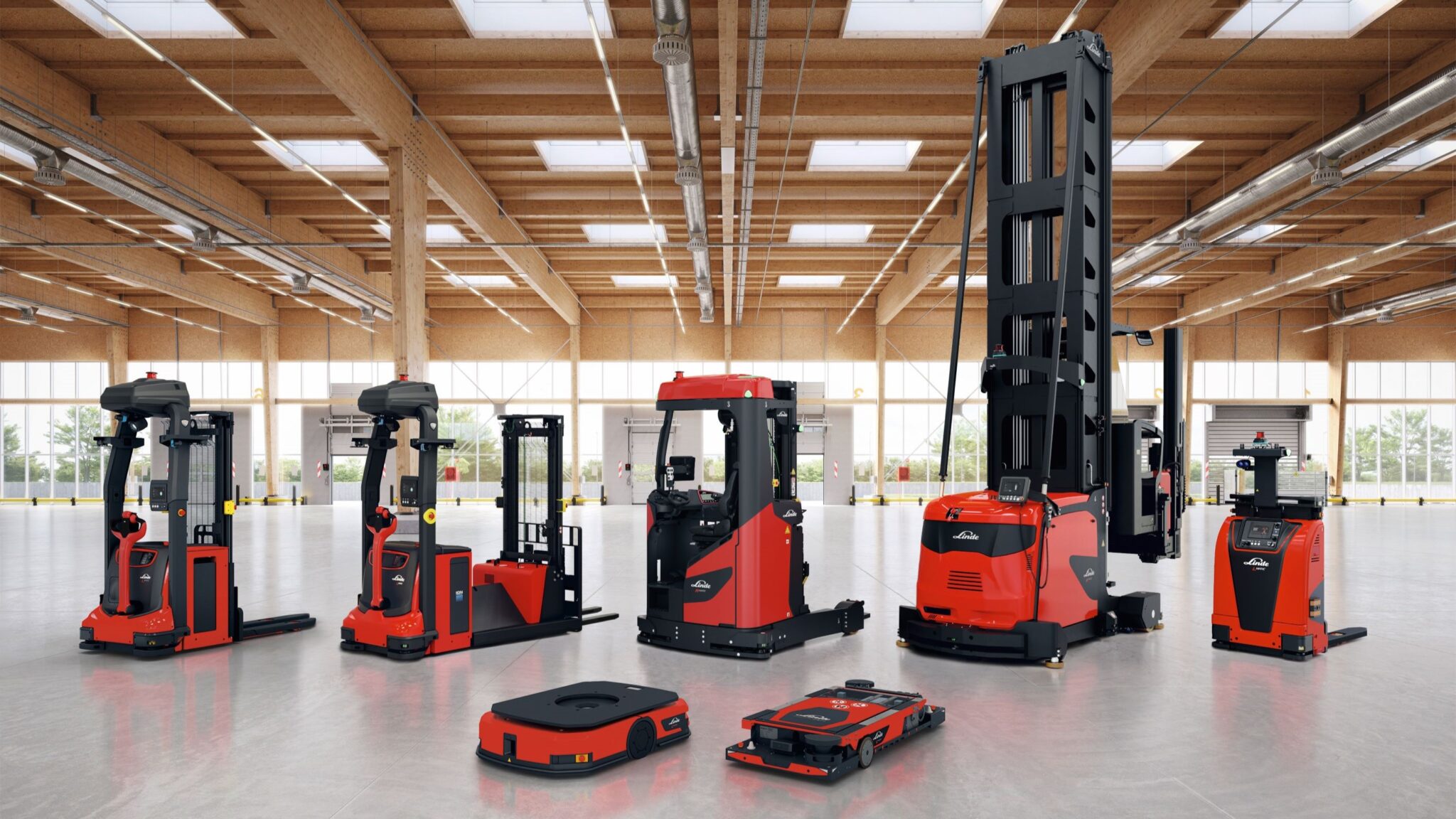The Linde-Xi-Roadster is now available as part of the new electric counterbalance truck series from Linde Material Handling (MH). The lineup has been expanded to include seven more such vehicles, offering a load capacity of up to 2.0 tons and maximum visibility. The three- and four-wheel forklifts are equipped with an overhead guard that eliminates the need for an A-pillar. In addition, the vehicles feature various other design elements that optimize visibility, providing drivers with significantly greater visibility to the front, sides and above. This enhances safety during driving and lifting operations while enabling drivers to work more efficiently and productively.
Richard Bozem, Senior Strategy and Portfolio Manager for Counterbalance Trucks at Linde Material Handling, uses a straightforward formula to describe the correlations in day-to-day forklift handling: Visibility equals safety equals productivity. “The better the drivers can see the route ahead, the surrounding area and the forks carrying the load, the easier it is for them to stay focused and maintain a high level of efficiency,” explains the product expert. People or obstacles approaching can be identified early on, ensuring greater operational safety. Good visibility is also important for quickly and accurately positioning both the vehicle and the load, which helps achieve high throughput in warehouse and production areas.
Customization makes the difference
Linde MH has once again demonstrated its expertise in providing forklift models that are customized to meet specific needs. The Roadster excels in situations that require exceptional visibility, safety and ergonomics. For instance, it is ideal for transporting and precisely positioning large and bulky loads or for serving racking and truck loading areas, which require precise maneuvering and therefore good visibility. Operators benefit from the large windows offered by the Roadster models’ special protective roof, which is exclusively available from Linde MH thanks to the associated overhead tilt cylinders. The most significant enhancement to visibility is achieved by removing the A-pillars, which typically obstruct the view to the right and left of the lift mast.
Additionally, the front panel has been lowered to improve visibility of the fork tips, and slim B-pillars have been added to assist with backing up. To provide the driver with a clear upward view during loading and unloading operations, all the roof struts and cross struts are designed to be as narrow as possible. For a completely unobstructed view, the forklift is available with an optional panoramic reinforced glass roof, which is designed to provide reliable protection against falling objects, as evidenced by compliance with relevant standards and extensive in-house testing.

Another highlight of the new Roadster is the Linde Steer Control, which replaces the standard steering wheel with either a mini-wheel or a joystick. “These two equipment options, integrated into the wide left armrest, improve both visibility and ergonomics and are the perfect match for the new Roadster,” emphasizes Bozem.
Roadster: Based on innovative electric forklift truck series
The Linde Xi14 to Xi20 R (three-wheel) and Linde Xi16 to Xi20 R (four-wheel) models are based on the corresponding standard versions of the new electric forklift truck series with integrated lithium-ion batteries. Despite their compact dimensions, these models offer a very spacious work environment with ample legroom and headroom, as well as a large step for easy entry and exit. Both the standard Linde Xi version and the Roadster are equipped with high-performance yet economical synchronous reluctance motors that provide maximum performance and high residual load capacities. The same applies to all available equipment options, such as seat or mast variants, ensuring maximum customization. Lastly, the new series offers many other advantages, such as a vibration isolation concept on the drive axle, steering axle and lift mast.
Reduced operating costs, increased sustainability
In addition to having maintenance-free large components such as the motors and battery, the vehicle’s entire design is geared toward maximum serviceability. The goal is to minimize operating and maintenance costs while maximizing sustainability. For instance, the interval for replacing hydraulic oil and filters has been extended to 6,000 operating hours, setting a new industry standard. This significantly reduces hydraulic oil consumption, minimizes waste, and decreases downtime over the vehicle’s lifetime.




![[Podcast] Safety First: How to ensure Safety in Intralogistics](https://9e1ed6cd27b6b3199380.b-cdn.net/wp-content/uploads/2025/07/Design-9-4-1.png)








